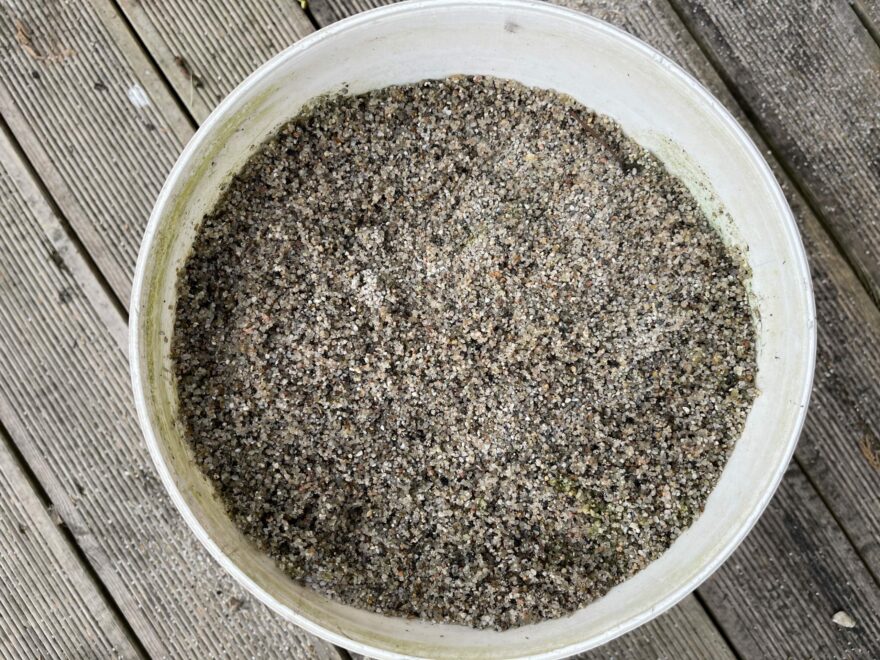How to move a fish tank
Moving a fish tank is not always straight forward as you need to meet the safety needs of your fish, yourself, and the people around you. Here’s how.
Don’t lift the fish tank full of water
No fish tank should be moved when it’s full of water. You won’t be able to physically lift most tanks and if you could, you risk splashing water at best and broken fingers or a dropped, broken tank at worst.
Be prepared
First arm yourself with buckets, towels, nets, and syphon tubes. The ideal is to move everything into a large vat, so fill it with tank water, move the heater and filter over, then the fish. Once they are in there it takes the time pressure off you with the empty tank as if they had to, the fish could stay in there for days.
Run an airstone
Get an airpump and run an airstone in the vat 24 hours a day. Fish deaths are common through lack of oxygen as mature biological filters actually consume oxygen and starve the fish of it. Run an airstone as well as the heater and filter and that’s one less risk on your list.
Cover the fish in the bucket
If using buckets fit the bucket lid but leave it open a tiny bit to let air in and out. You need to cover the fish to stop them jumping out and if its a black bucket the darkness will also help to keep them calm. If you need to cover a large vat use a sheet of corrugated plastic or polycarbonate from a DIY store, or some garden netting.
Don’t feed the fish before moving the tank aquarium
Once you have a date for moving don’t feed the fish the day before, during or after the move. It will create extra waste and ammonia, and adding to the bacteria that you may lose in the strip down, it can cause water quality problems.
Save the old fish tank water
The water in your tank should be clean and mature prior to the move, so it’s a good idea to save and move as much of it as you can. Before moving any decor or catching fish, syphon off 75% of the clean tank water into vats, buckets or RO drums. It will make for a more seamless refill once the tank is moved.
Use two fish catching nets
It’s really hard to catch fish in their home aquarium. They know every inch of it and you will be hindered by decor and tank bracing bars. Use two nets, and ideally, two people working together to corral the fish into a corner. Remove as much decor as you can first, to stop the nets from snagging and remove the fish’s boltholes. Account for every fish you catch to make sure none are left at the end.
Scoop out the aquarium gravel
Gravel will add to the weight of the empty tank considerably, so that needs to come out too. Use a fish catching net to scoop the gravel out into a large bucket. A dustpan can be used to scoop the remaining gravel once the tank is empty of water.

Wipe and remove green algae
Algae wipe the tank while it’s empty. Use the dregs of old tank water to help clean it, and then syphon or scoop the last bits of dirty water out, leaving a clean, empty, liftable tank. Dustpans are great at getting that last inch of water out that can’t be syphoned, and if you want every last drop, sit a sponge in there to soak it up.
Put the fish tank somewhere
The paradox with moving tanks is that you need to move the cabinet first, only the tank is on it. Set up a strong resting place to put the tank on. This could be a strong table, a pallet, some RO drums or a bench. Don’t put it straight onto the floor as you risk crushing your fingers and you won’t be able to get fingers under it again. Raise it up on some polystyrene for ease of access and cushioning to prevent damage to the base.
If it has cover glasses its important to remove them entirely or tape them up securely so they cant slide or fall out if the tank is tipped. If you’re struggling at one end of a heavy tank, you don’t need a glass guillotine heading straight for your neck!
Move the aquarium cabinet
Using at least two people, move the cabinet to its new destination. Make sure the new floor is strong and level and it’s near to but not directly over powerpoints.
Replace the tank
Put the tank back onto the cabinet and check its level.
Replace the aquarium decor
Rinse the gravel in some spare old tank water to remove dirt but maintain the beneficial bacteria within it. Put the gravel down in the tank first, then the decor, then any plants.
Refill the fish tank
Refill the tank with clean old tank water that you drew off and stored earlier. You won’t have enough to fill the whole tank because the fish are still in the rest of it. Just like when you do a water change, bring new tapwater to temperature, then use tap safe, and then it’s safe to pour into the tank. Fill the tank to its usual running level.
Move the aquarium heater and filter
Turn off the heater 10 minutes in advance to let it cool down. Then turn off the filter that’s in with the fish and move the heater and filter back into the tank, and turn on. Don’t clean the filter at this stage as you want as much beneficial bacteria to be intact as possible. Leave the airstone running with the fish.
Catch the aquarium fish
Once heater and filter are removed, catch the fish and place them back into the main tank. Leve the lights off throughout so as not to stress the fish. Add some filter bacteria and observe. Test water the next day to ensure there are no water quality blips.
How to move house with fish
If you are moving a considerable distance not all of the above is possible. Visit your local fish store and buy some fish bags and polystyrene boxes from them. This is what is used to transport fish around the world for days at a time. Catch and pack the fish individually in bags, with one-third water and two-thirds air. Tie them up and place them into the polystyrene box, then tape up the lid. As above don’t feed the fish for a day before moving.
Spiny fish may need double bags to prevent them puncturing them during the journey. Once packed, strip the tank, move it, set it back up and then float the fish just like you did when yo first bought them.
The five golden rules of moving fish tanks
- Get people to help you - it will be quicker and easier
- Give yourself the whole day - it always takes double the time you think it will
- Do it while the shops are open - if you have a disaster at night time no one will be there to help you or your fish
- Stay calm - your fish don’t need you freaking out and making the wrong decisions
- Monitor - check the fish are ok every half an hour and check temperature and water quality









